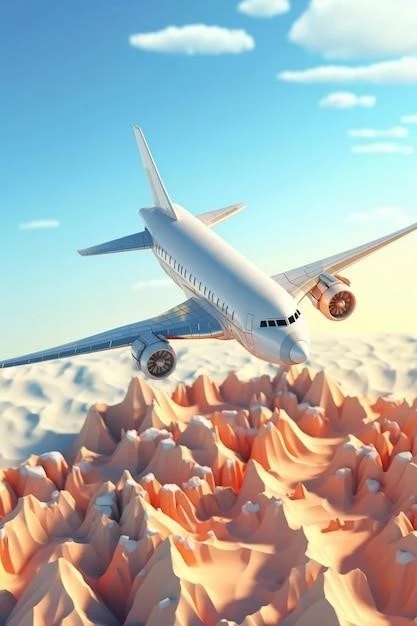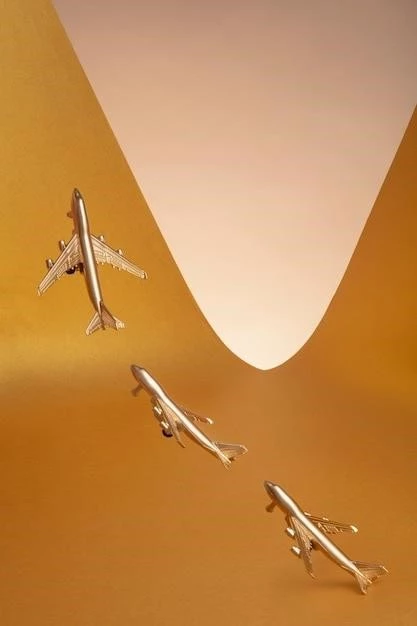The Physics of Flight: From Birds to Airplanes
Since the dawn of humanity, we have gazed at the sky, mesmerized by the effortless grace of soaring birds․ The dream of flight, of joining those creatures in the boundless expanse above, has been a constant in our shared history․ Today, while the wonder of flight hasn’t faded, we understand the principles that make it possible, principles rooted in the fundamental laws of physics․
The Four Forces of Flight
Heavier-than-air flight is made possible by a careful balance of four physical forces: lift, drag, weight, and thrust․ For flight, an aircraft’s lift must balance its weight, and its thrust must exceed its drag․
1․ Lift
Lift is the force that counteracts gravity․ It is the force that acts perpendicular to the direction of motion through the air․ Several factors influence lift:
- Airfoil Shape: The shape of a wing, with its curved upper surface and flatter lower surface, is crucial․ As air flows over the wing, the curved upper surface forces the air to travel a longer distance than the air flowing under the wing․ According to Bernoulli’s principle, faster-moving air exerts lower pressure․ This difference in air pressure above and below the wing creates lift․
- Angle of Attack: This refers to the angle between the wing and the oncoming airflow․ Increasing the angle of attack can increase lift, but only to a certain point․ Beyond a critical angle, the airflow separates from the wing, leading to a stall and a loss of lift․
- Airspeed: Lift increases with the square of airspeed․ This is why airplanes need a certain speed to take off and why they can maintain flight at different altitudes by adjusting their speed․
- Air Density: Denser air provides more lift․ This is why it’s easier to take off on a cold day or at sea level, where the air is denser, compared to a hot day or at high altitudes․
2․ Drag
Drag is the force that opposes the motion of an object through the air․ It acts in the opposite direction to thrust and has several components:
- Form Drag: This is caused by the shape of the object․ Streamlined shapes, like those of airplanes, are designed to minimize form drag․
- Skin Friction Drag: This is caused by the friction between the air and the surface of the object․ Smooth surfaces help reduce skin friction drag․
- Induced Drag: This drag is a byproduct of lift․ As the wing generates lift, it also creates vortices (spinning air) at the wingtips․ These vortices create downward air movement, which induces drag․
3․ Weight
Weight is the force exerted on an object due to gravity․ It acts downwards, pulling the aircraft towards the ground․ The weight of an aircraft is determined by its mass and the acceleration due to gravity․
4․ Thrust
Thrust is the force that propels an aircraft forward․ It is generated by the aircraft’s engines, which can be propeller engines, jet engines, or rocket engines․ Thrust overcomes drag and allows the aircraft to achieve and maintain airspeed․

Controlling the Forces: Flight Control Surfaces
Pilots control the forces of flight using control surfaces on the wings and tail of the aircraft:
- Ailerons: Located on the trailing edge of the wings, ailerons control roll, or the aircraft’s movement around its longitudinal axis․
- Elevators: Situated on the horizontal stabilizer (tail), elevators control pitch, or the aircraft’s up-and-down movement․
- Rudder: Found on the vertical stabilizer (tail), the rudder controls yaw, or the aircraft’s left-and-right movement․
From Birds to Airplanes: A Continuum of Principles
While birds and airplanes may seem vastly different, they both achieve flight by manipulating the same four forces․ Birds, with their feathered wings, constantly adjust the shape and angle of their wings to generate lift and thrust, while using their tails for control․ Airplanes, with their rigid wings and powerful engines, utilize the same principles, albeit with more sophisticated control mechanisms․

The Future of Flight
The science of aerodynamics is constantly evolving․ Researchers are exploring new materials, designs, and propulsion systems to make aircraft more efficient, quieter, and environmentally friendly․ From supersonic aircraft to drones, from hypersonic flight to the exploration of other planets, the future of flight promises to be as exciting and innovative as its past․










